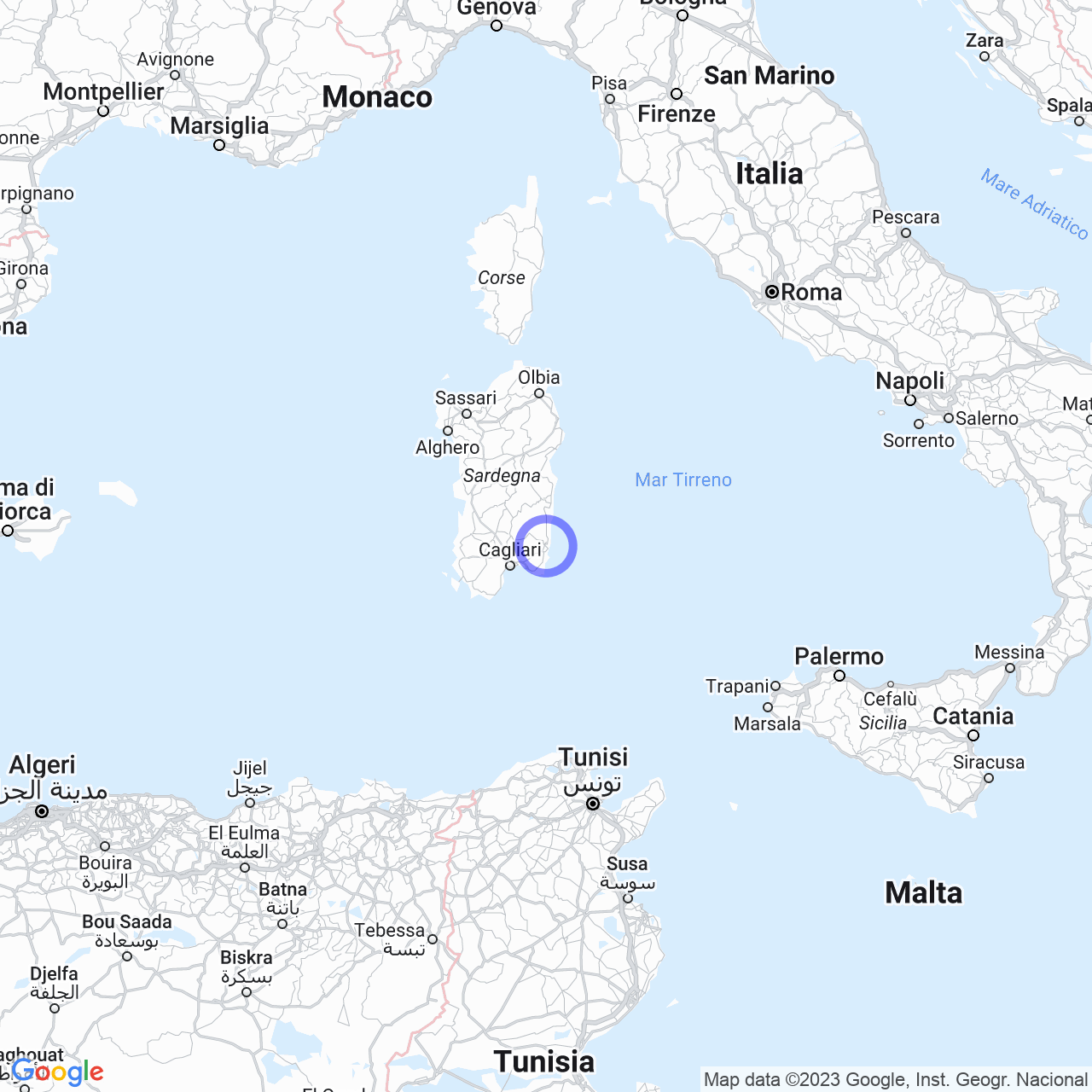Muravera
Cagliari, the city facing the Gulf of Angels
Cagliari, the capital city of the autonomous region of Sardinia, is a city with a history that spans over several millennia. It served as the capital of the "Sardinia and Corsica" province during the history of Roman Sardinia, and later as the capital and seat of the Stamenti of the Kingdom of Sardinia, from 1324/1355 to 1847. In addition, Cagliari is renowned for being the location of the University of Cagliari and the Archdiocese of Cagliari. The city has a population of 148,259, which rises to 419,993 with the metropolitan city of Cagliari.
Physical geography

Territory
Cagliari is located on the southern coast of Sardinia, in the center of the Gulf of Angels. The city is built around the hill of the historic district of Castello, with its seven limestone hills, including Tuvuminu/Tuvixeddu, Monte Claro, Monte Urpinu, Colle di Bonaria, Colle di San Michele, Calamosca, and Sella del Diavolo. The Sella del Diavolo and the Molentargius pond delimit the city to the east, while the Cagliari pond and the Tyrrhenian Sea delimit it to the west and south, respectively. To the north, there are the hills of San Michele and the Campidano plain, and we also find Montixeddu, Monte Mixi, and Cuccuru 'e Serra.
Climate
Cagliari has a Mediterranean climate, characterized by mild winters and hot and dry summers. During the summer, temperatures can exceed 40°C, but the heat is made more bearable by the daytime sea breeze from the sirocco, called "s'imbattu" in local dialect. The climate is characterized by frequent winds, such as the mistral and the sirocco. The average annual temperature is 17.5°C, but temperatures in the city center can be a few degrees higher.
Etymology
The name of the city, "Karali," is attributable to the Proto-Sardinian language and derives from the root "kar," meaning "stone/rock," and the suffix "-ali." The name refers to the city's limestone formation and means "rocky place."
The millenary history of Cagliari
Cagliari was founded as a Phoenician settlement and was subsequently occupied by the Carthaginians, who called it Karalis. In 238 BC, the city was conquered by the Romans and became one of the most important cities in the province of Sardinia et Corsica. In the Middle Ages, Cagliari experienced significant growth, building castles and watchtowers. Between the 14th and 15th centuries, the city became the capital of the Kingdom of Sardinia and from the 16th century was subject to the noble families of Spain and Piedmont. In the 20th century, the city was affected by World War II and was destroyed by numerous bombings during the conflict.
The port of Cagliari
The Port of Cagliari is one of Italy's most important ports for its strategic location in the Mediterranean. Classified as an "international port," the port serves commercial, industrial, and tourist functions. Several passenger services, such as the ferry terminal, and numerous commercial activities are present in the port of Cagliari.
The cuisine of Cagliari
Cagliari's cuisine is characterized by its proximity to the sea and typical island products. Among the typical dishes of Cagliari's cuisine are spaghetti with clams and fregola with clams. Porceddu, lamb stew, and seadas are other specialties of Cagliari's culinary tradition. In addition, Sardinia is renowned for its cheeses, such as pecorino sardo and casu marzu.
Places to visit
Cagliari is a city rich in historical monuments and natural beauties. Among the places to visit are the Castle of San Michele, the Cathedral of Santa Maria, the National Archaeological Museum, the Tuvixeddu necropolis, and the Molentargius pond, where pink flamingos can be observed. In addition, the port of Cagliari, the Poetto and Calamosca beaches, and the Devil's Saddle are other renowned tourist destinations.
